Great advice for cooking restaurant-quality steak every time
Raise the steaks
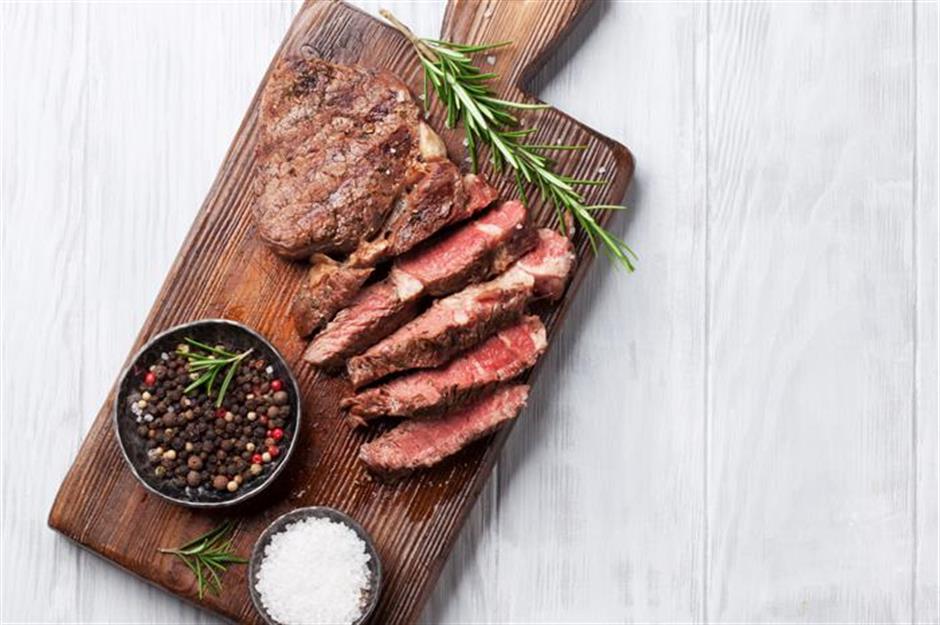
For many of us, tucking into a steak at home is a rare treat – not only is it expensive, but it’s also surprisingly easy to get wrong, which is why it’s so tempting to just leave cooking it to the experts. However, with just a few handy tips, you really can produce perfectly juicy, tender, restaurant-quality steak in your own kitchen. To help you get the best out of your beef, we’ve rounded up some clever ways to avoid common mistakes, from knowing your cuts to the importance of seasoning.
Click or scroll through our gallery to discover our ranking of the most common mistakes people make when cooking steak – and learn how to get it right every time.
41. Skipping steak salads
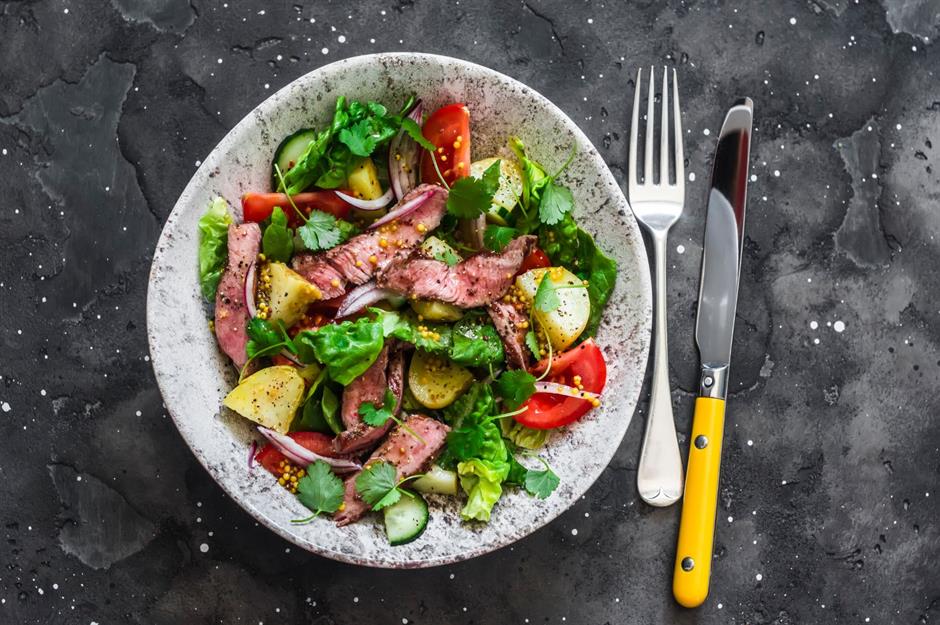
It's hard to beat a classic steak, chips and vegetables combo – but if you fancy mixing it up, how about trying out a tasty salad? There are plenty of delicious ways you can elevate a salad with the juicy meat: try your hand at a Vietnamese-style one with lots of watercress, fresh herbs and crispy rice, or layer the cut of meat over your favourite grain combination with a zingy dressing. The possibilities are endless.
40. Dismissing the use of dark chocolate
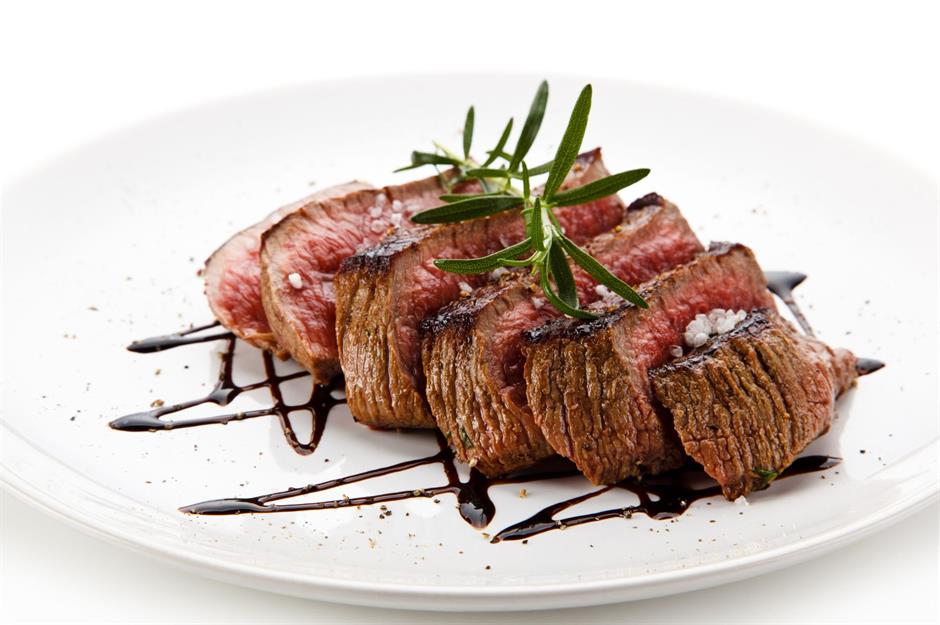
It may seem like an unlikely combination, but you better believe us when we say a mix of bitter dark chocolate, sweet brown sugar and cayenne pepper works well with steak. In a small pan, heat 0.5oz (15g) each dark chocolate and brown sugar with 11fl oz (325ml) boiling water and a pinch each of salt and cayenne pepper, until the chocolate has melted and the sugar dissolves. Allow the mixture to cool, then use half as a marinade for thin steaks, to help tenderise and flavour. Reduce the rest of the mixture until sticky, then drizzle it over the cooked meat.
39. Never trying chimichurri
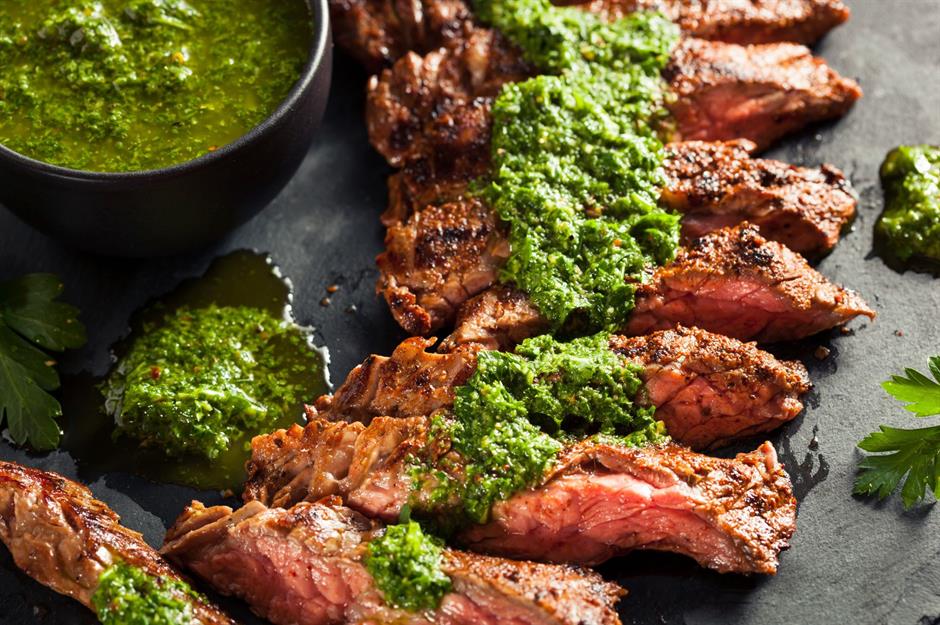
A herby sauce is a great accompaniment to a steak. Chimichurri, an Argentinian condiment, is a brilliant example that balances the rich flavour of the meat perfectly. To make it, fresh mint, parsley, coriander and dill are mixed with minced shallots, garlic, red chilli, red wine vinegar and extra-virgin olive oil. The punchy sauce pairs particularly well with skirt steak.
38. Steering clear of mushroom sauce
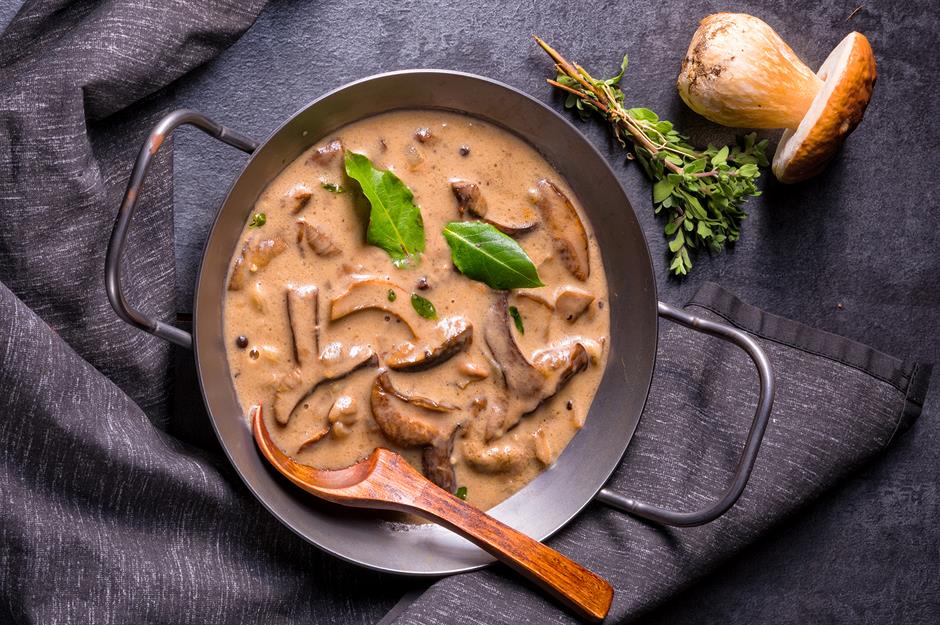
Mushroom sauce, often called sauce Diane, is creamy and rich, so it's best served with thick and meaty cuts. It usually sees beef stock (or cooking juices from the steak) combined with cream, garlic, mushrooms, shallots and herbs. Indulgent and delicious, there’s a reason why this combination is a much-loved classic.
37. Sticking to the same recipes
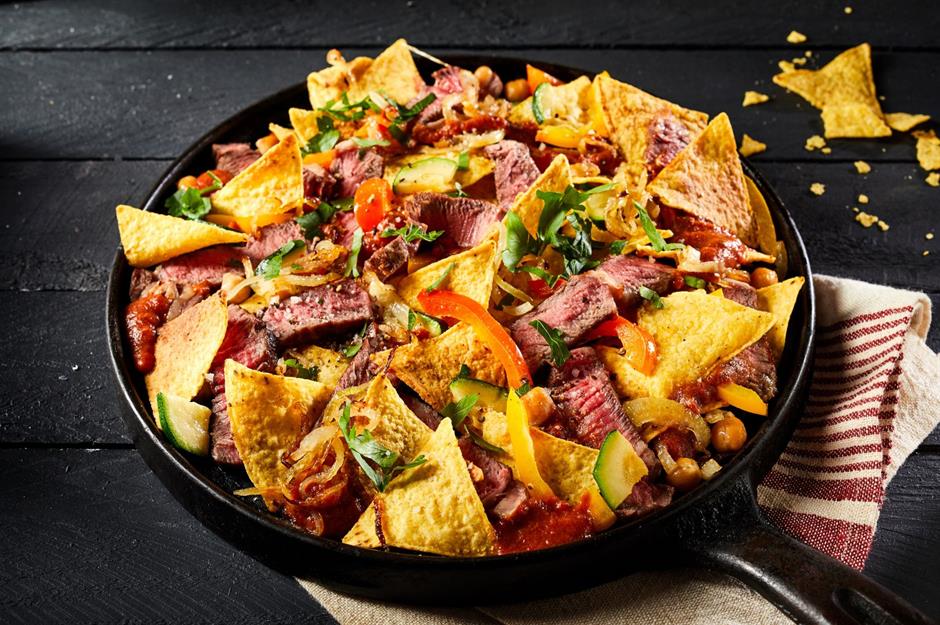
Sure, nothing beats a classic Philly cheesesteak, but there's one way to level up the winning combination even further: Philly steak nachos. This delicious sharing dish allows you to get experimental in the kitchen. Layer crunchy tortilla chips with a creamy cheese sauce, add thinly sliced jalapeños and steak (marinade it in a zippy pickle brine or fiery chilli blend), then top things off with homemade salsa, sour cream and fresh guacamole.
36. Never trying teriyaki sauce
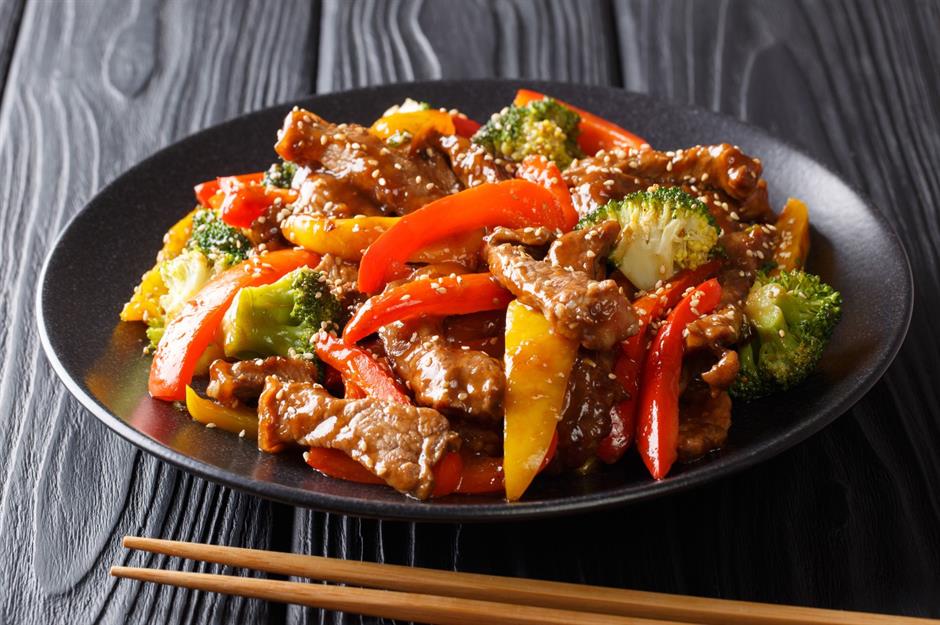
Planning on searing your steak on the barbecue? Mix things up with a bold Japanese-inspired teriyaki sauce to really impress your guests. Combine equal parts soy sauce, mirin (Japanese sweet rice wine) and sake, plus a little sugar, then simmer in a pan until you have a deliciously sticky marinade for your steak.
35. Forgetting about red wine jus
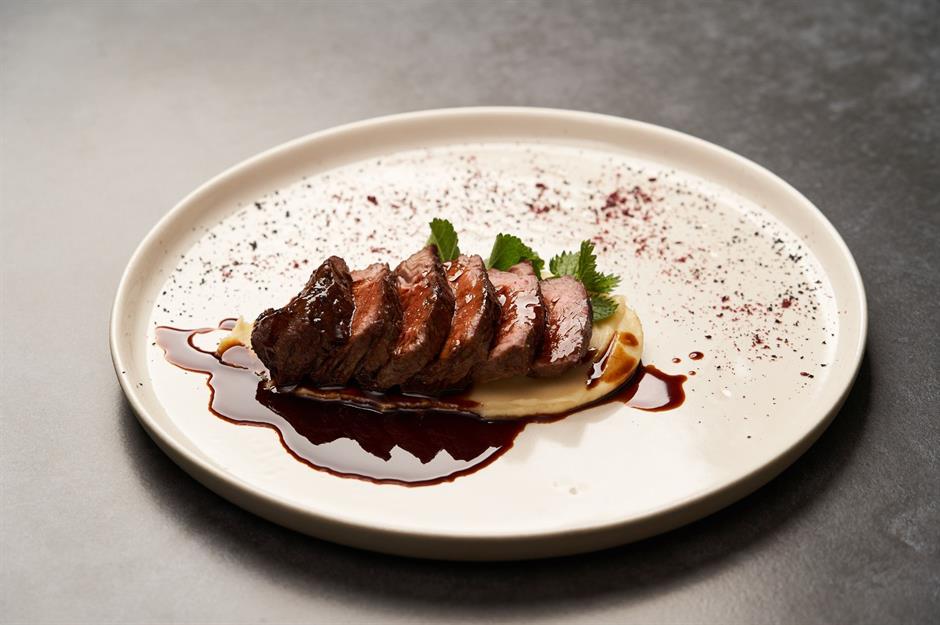
A red wine sauce (also called a reduction or jus) is a fail-safe pairing with steak. There are a number of variations, but it’s worth sticking to a simple recipe of butter, onion, red wine, stock and vinegar. If you like, you can infuse the sauce with herbs like rosemary or thyme.
34. Missing out on a zingy side sauce
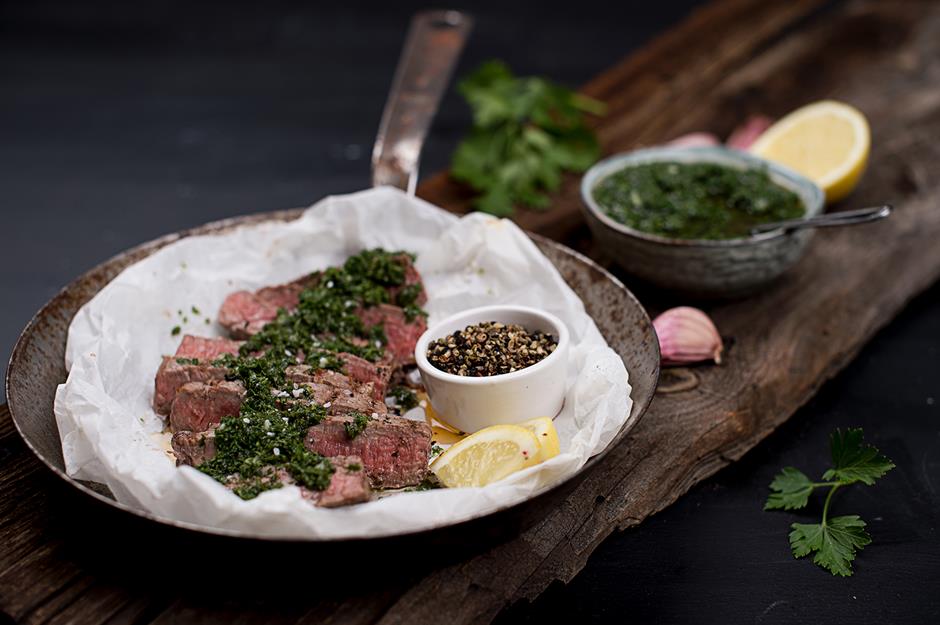
Salsa verde literally translates to 'green sauce', so it's not surprising that the main ingredient is herbs. It's also made with capers and anchovies, with the latter adding a meaty depth of flavour to the condiment. To make it, simply combine four chopped basil leaves, the chopped leaves from two sprigs of flat-leaf parsley, two crushed garlic cloves, two chopped anchovies, 2 tbsp capers, 1 tbsp white wine vinegar and 7fl oz (200ml) extra-virgin olive oil. Serve the sauce drizzled over your cooked and rested steak.
33. Overlooking the oven
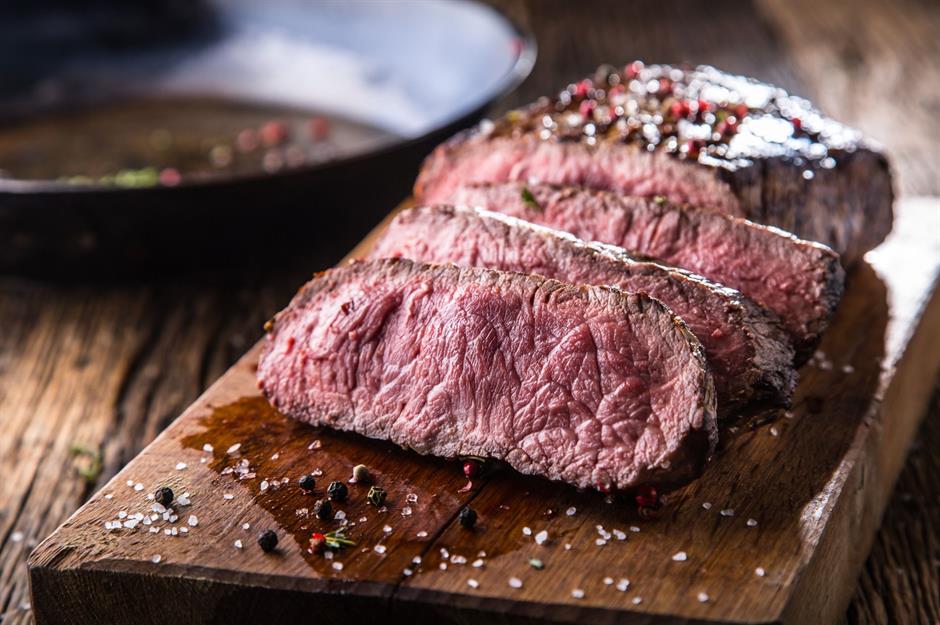
For most steak cuts, you can do all the cooking on the stove. However, another option is searing the steak in an ovenproof pan on a high heat for around 30 seconds on each side, then transferring it to the oven to finish cooking. But keep in mind that this only works for thick-cut steaks, as thinner cuts will instantly overcook. Close the oven door, then, after a couple of minutes, flip the steak, and cook it for a further two minutes for a medium-rare result. For a medium steak, allow four minutes before removing.
32. Buying your steak at the supermarket
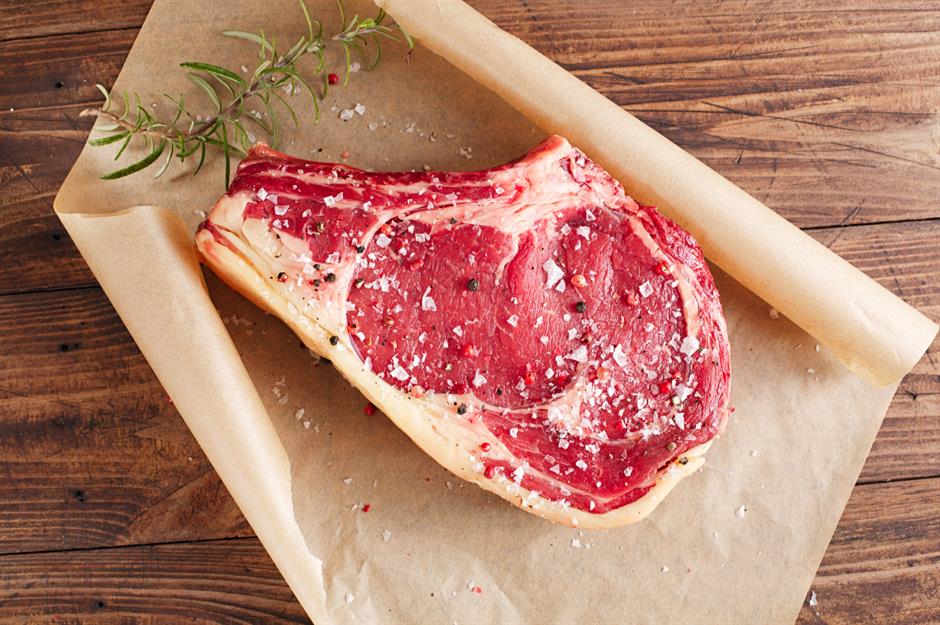
There's usually a decent offering of steaks at the supermarket; however, if you’ve got a good local butcher's or farm shop, it should always be your first stop for top-quality beef. Butchers are highly knowledgeable and passionate about meat and can advise on cuts, cooking times and provenance. Try to buy local, grass-fed and organic if you can afford to.
31. Opting for shop-bought béarnaise sauce
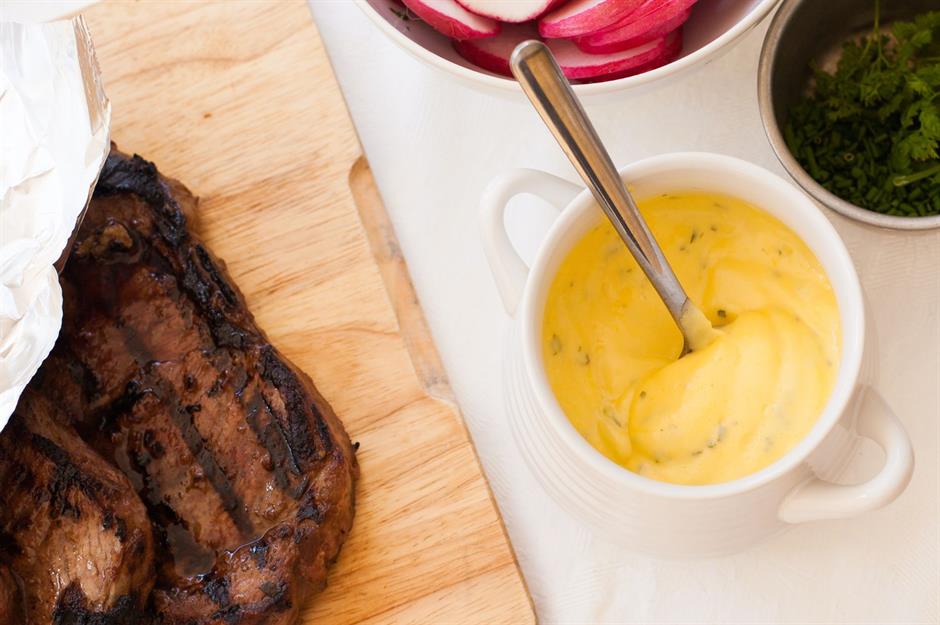
To really elevate your at-home steak experience, make the accompanying sauce from scratch. Béarnaise is essentially a Hollandaise sauce with tarragon, and it’s easy to prepare. Add a diced shallot, half a bunch of tarragon and 1.7fl oz (50ml) white wine vinegar to a pan, bringing to the boil. Remove from the heat, strain the vinegar and discard the shallot and tarragon. In a bowl set over a pan of simmering water, combine four egg yolks with the vinegar and slowly add 10.6oz (300g) butter, whisking continuously. Stir in the rest of the tarragon and a squeeze of lemon juice. Once made, keep the sauce warm to prevent it from splitting.
30. Always searing first
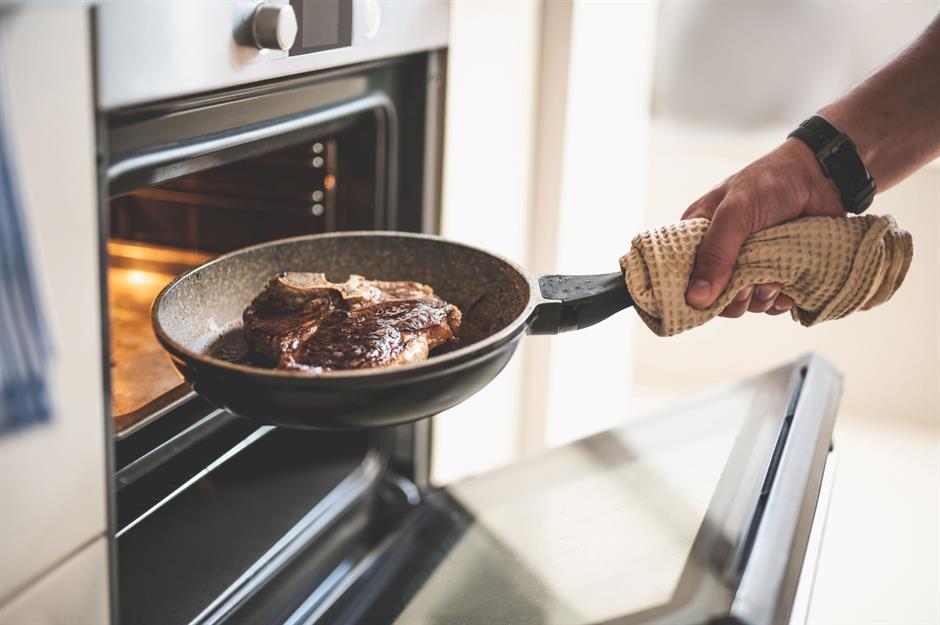
Fed up with the same pan-fried fillets? There’s an easy way to elevate your steak night, and it involves using the oven. Many chefs favour a technique called reverse searing, which involves cooking a large cut in a low oven first, then transferring it to a hot pan for a final sear. This process allows you to control the temperature and results in a tasty, caramelised crust.
29. Only using mustard as a condiment
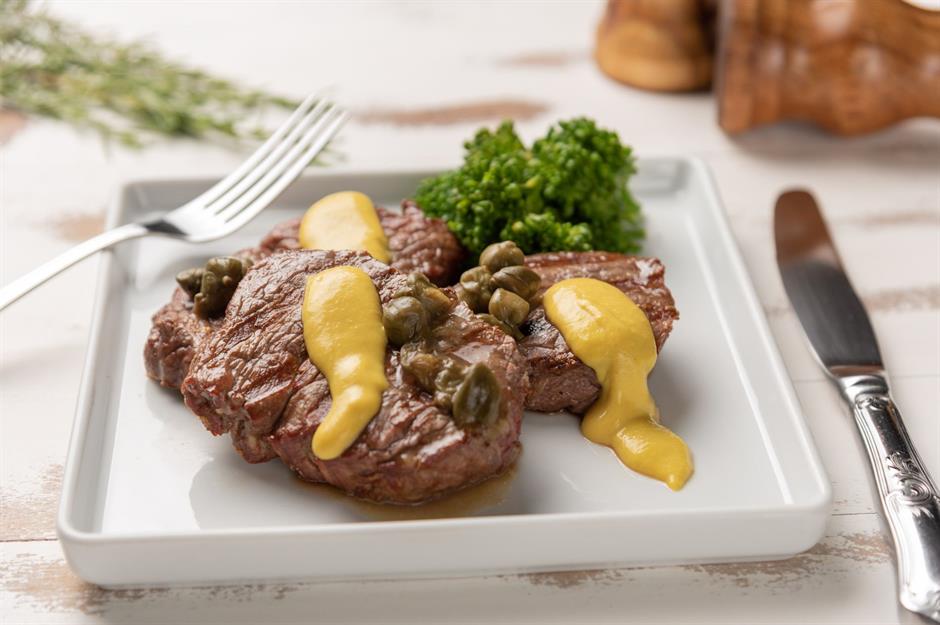
Beef and mustard are a match made in heaven, so mixing up a simple mustard sauce is a bit of a no-brainer. Combine Dijon mustard with a splash of red wine vinegar, sugar, oil and fresh dill, and serve the sauce drizzled over cold cuts of beef. You could also use the dressing to spice up a green salad or add interest to a meaty sandwich
28. Mixing up your T-bone with your porterhouse
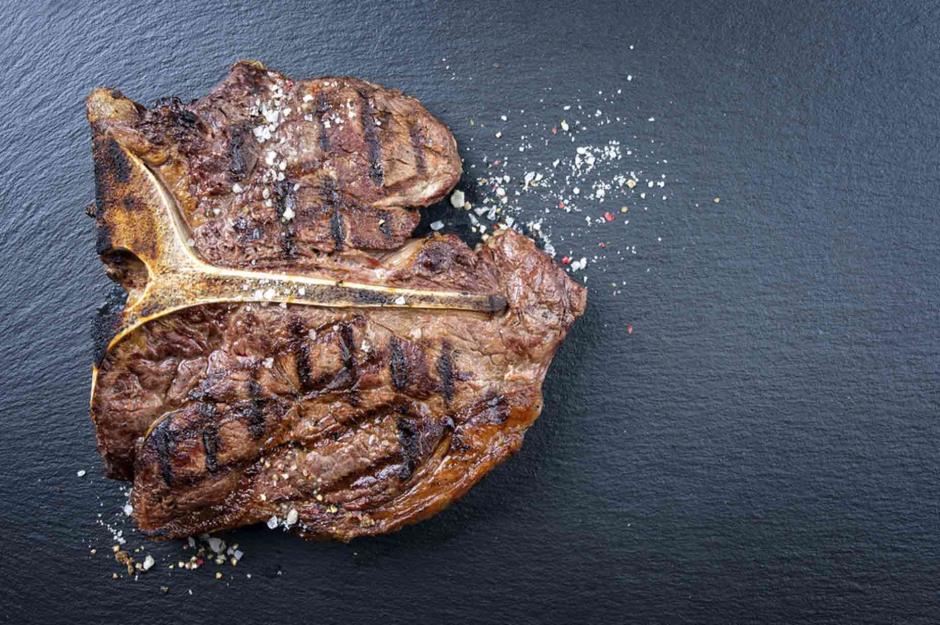
A T-bone is two steaks in one: part sirloin and part tenderloin fillet. It needs careful cooking on the grill and doesn’t suit being well done. A porterhouse steak is effectively the same as a T-bone steak, but it has a bigger tenderloin. One of the most expensive cuts is chateaubriand, a large steak cut from the thickest part of the fillet. It's tender and relatively lean, yet juicy and flavoursome.
27. Never opting for a stir-fry
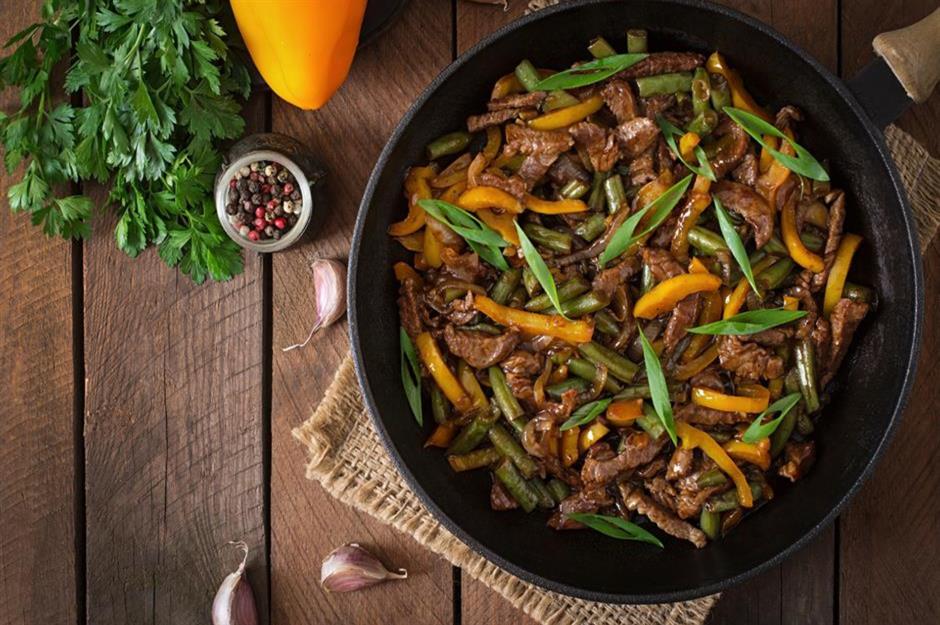
If you need to feed a crowd or want to make a steak go further, there are plenty of dishes to try. A stir-fry is a great option as it'll work well with a lot of different cuts, plus it's a handy way to use up any vegetables you have hanging around the fridge. Play with flavours, from fiery ginger and pungent garlic to sticky teriyaki.
26. Cooking from frozen
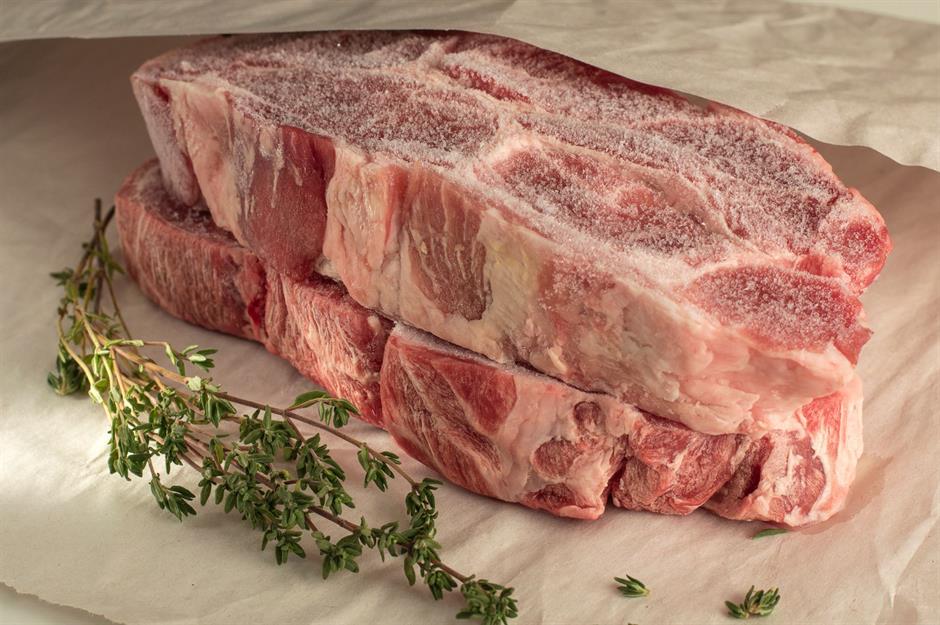
According to the United States Department of Agriculture (USDA), raw or cooked meat can be cooked or reheated in its frozen state. However, it will largely increase the overall cook time by at least one and a half times. In most scenarios, it’s easier to defrost your steak in the fridge overnight instead. If you're cooking it from frozen, ensure you check the internal temperature before consuming it – a medium-rare steak should be 60°C (140°F).
25. Using the wrong pan
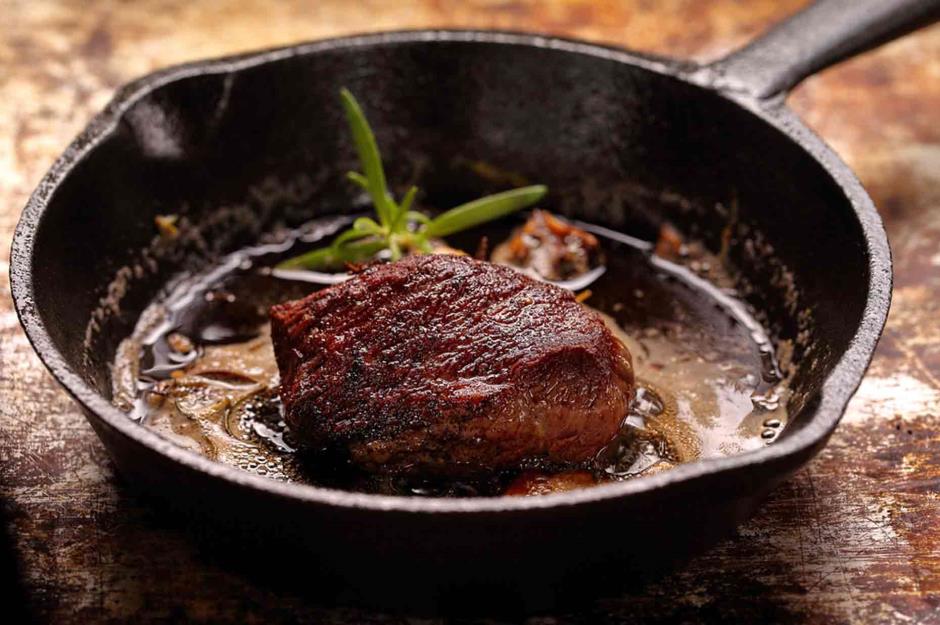
A thick-based frying pan, griddle or skillet is perfect for frying steaks. Heavy pans evenly distribute heat and retain more of it; you'll want to get your pan really hot in order to char the meat. Cast-iron pans are particularly good and will give you a great caramelised crust, while non-stick pans also work well.
24. Never experimenting with flavours

Not everyone loves the pungent aroma and flavour of blue cheese; however, for those who do, nothing beats it on a juicy steak. Blue cheese sauce can be made in a number of ways – the simplest recipe is to mix blue cheese, garlic, pepper, wine and the meat juices from your cooked steaks.
23. Skimping on the herbs
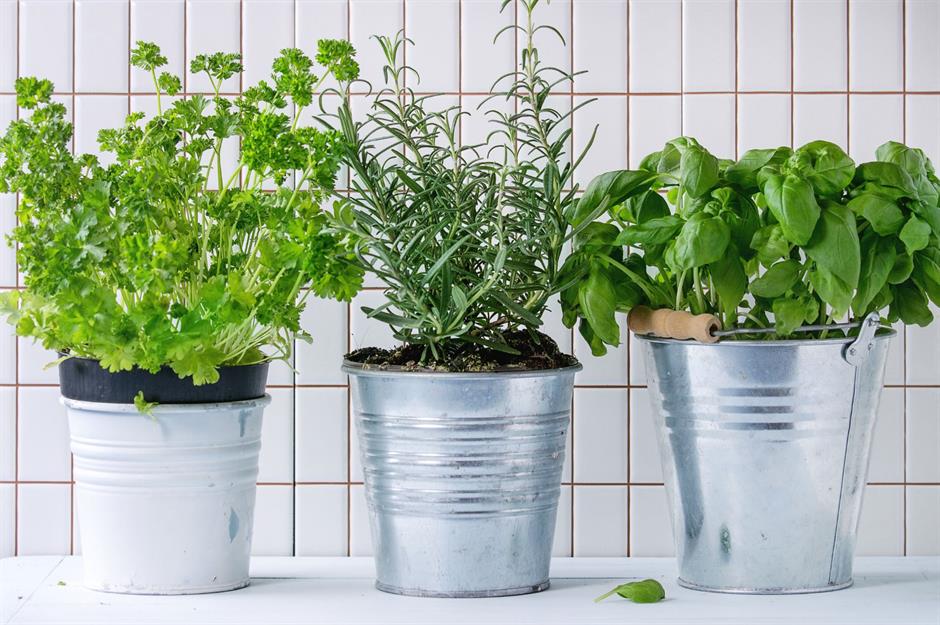
Searing your steak in salted butter is delicious, but it can get boring after a while. Adding in a few fresh herbs will make all the difference, transforming your meal from average to flavourful in minutes. Thankfully, beef goes with a host of fresh herbs. Bundle in a bunch of rosemary, sprinkle in a few sprigs of thyme or finish your meal with leafy parsley, lemon and garlic for a real flavour punch.
22. Leaving garlic butter to restaurants
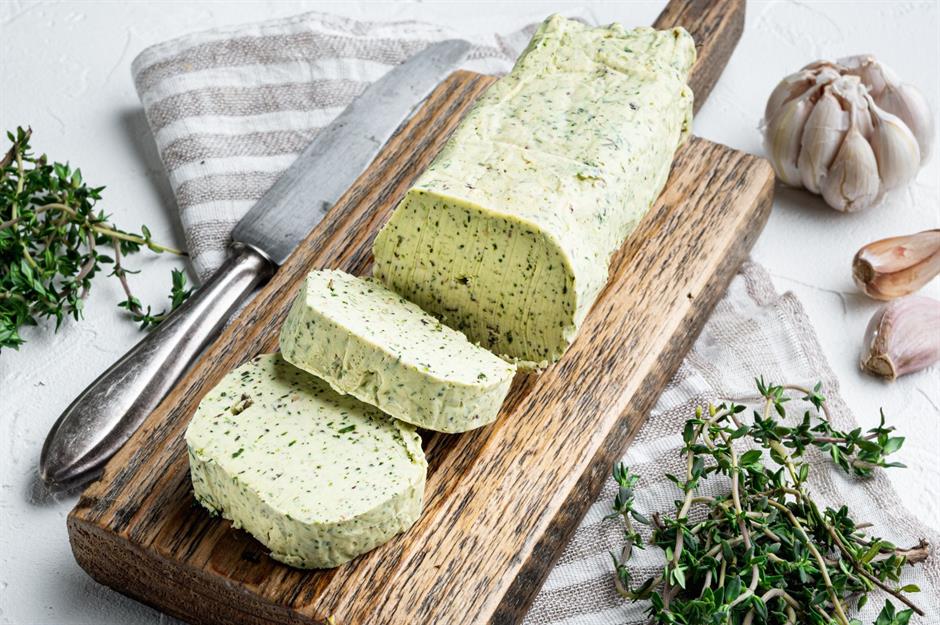
Love the garlic butter at steakhouses? Thankfully, it's incredibly easy to make. Mix softened butter with chopped parsley and garlic, roll it into a cylinder, wrap it in cling film, then pop it in the fridge. After your steak is cooked, add a thick disc of butter and flash it under a hot grill until the butter begins to melt.
21. Cutting with the grain
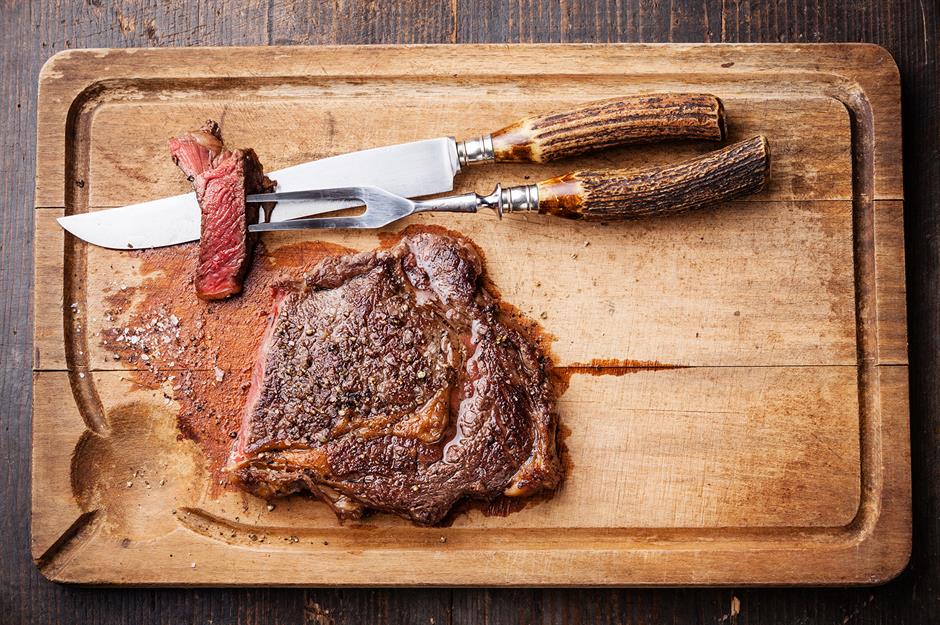
Nobody likes an overly tough cut – but thankfully, this can easily be fixed. When serving your steak, slice it against the grain to shorten the fibres, resulting in less chewy meat. The grain is the way muscle fibres run in meat. For example, if you see the muscle fibres running horizontally from left to right, slice your steak vertically rather than parallel to the grain.
20. Frying with olive oil
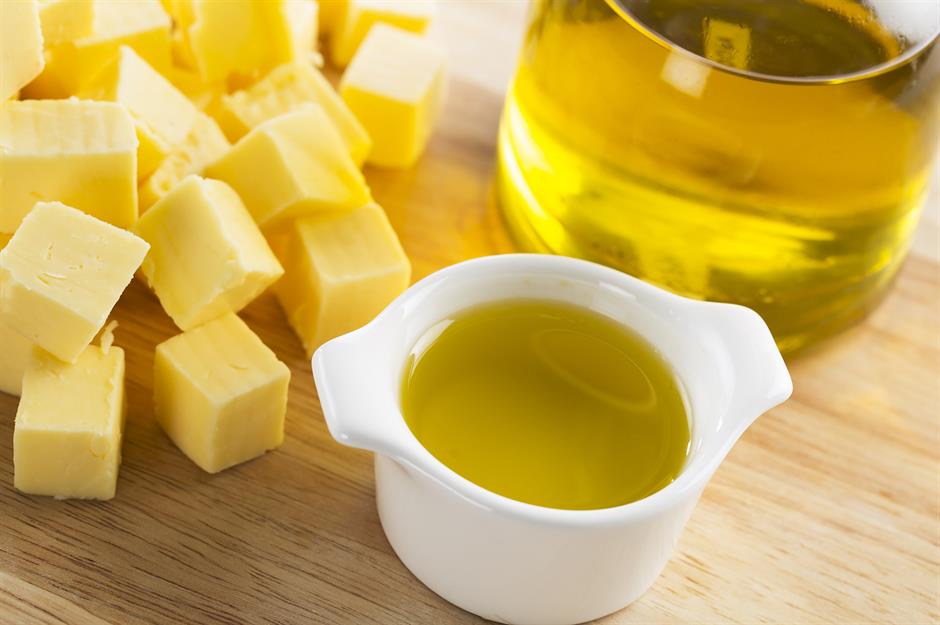
Cooks have varying opinions as to which fat is best when cooking steaks. Some like groundnut oil because it has a high smoke point, while others swear by animal fat such as lard, which makes for meatier-tasting steaks (although it does have a fairly low smoke point). Olive oil is generally avoided due to its low smoke point; it starts to burn at a lower temperature, producing toxic smoke.
19. Oiling the pan instead of the steak

Do you always oil your pan before frying? That’s the case for many foods, but the general consensus is that it’s better to brush steaks – not the pan – with oil or fat, massaging it in before cooking. If you prefer to do things the other way around, don’t use too much oil, and make sure it’s so hot that it separates before adding the steak to the pan.
18. Dismissing cheaper cuts
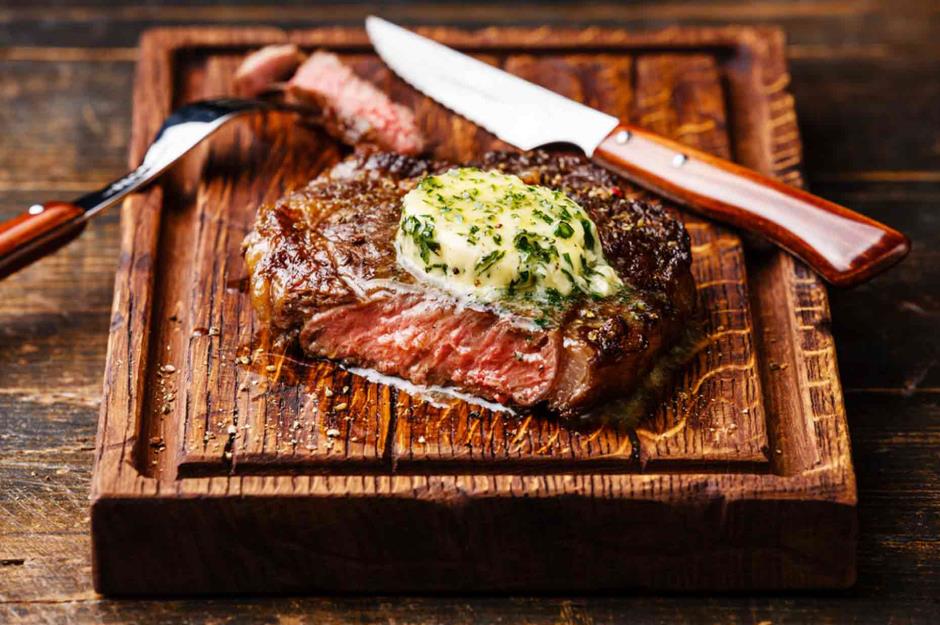
Cheap doesn't mean bad. Flash fry or barbecue a flank steak (also known as bavette) – it's flavourful and cheaper than other cuts. It's a good bistro steak but can also be sliced for salads, stir-fries and burritos. Flat iron steak is also gaining favour – it’s particularly good when marinated. New York strip steak (also known as Kansas City steak) is well-marbled and succulent, whereas hanger steak (often called onglet) is inexpensive and tasty. Often used for fajitas, skirt steak (not to be confused with hanger) is best cooked either hot and fast or low and slow.
17. Overlooking peppercorn sauce
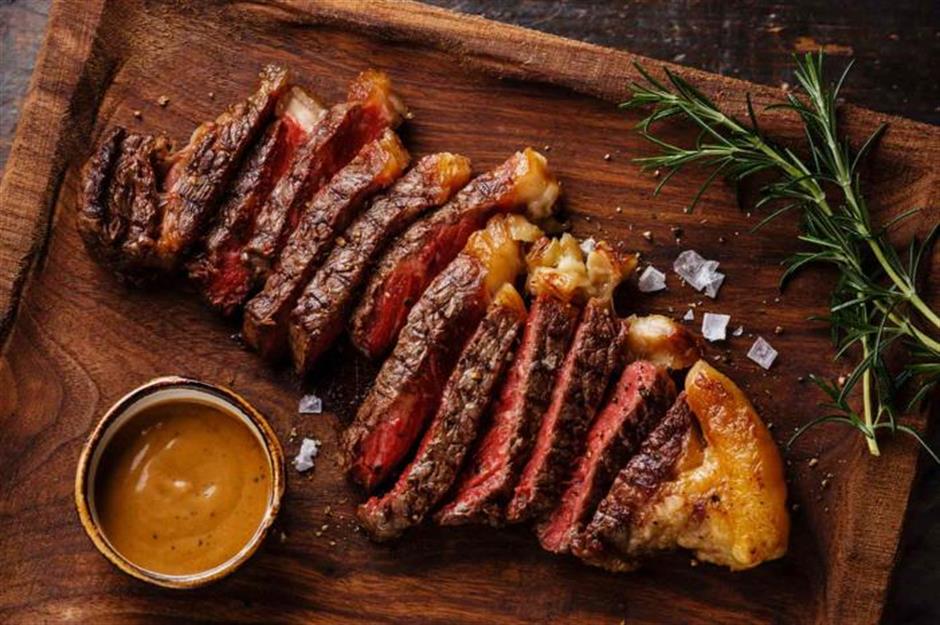
Rich and decadent, creamy peppercorn sauce is brilliant with beef – and it's incredibly easy to make at home. Crushed peppercorns are combined with sautéed shallots and butter, then brandy and stock are added and brought up to a rapid boil for around five minutes. Stir in double cream and any meaty juices from the steak, simmer and serve.
16. Ignoring marbling
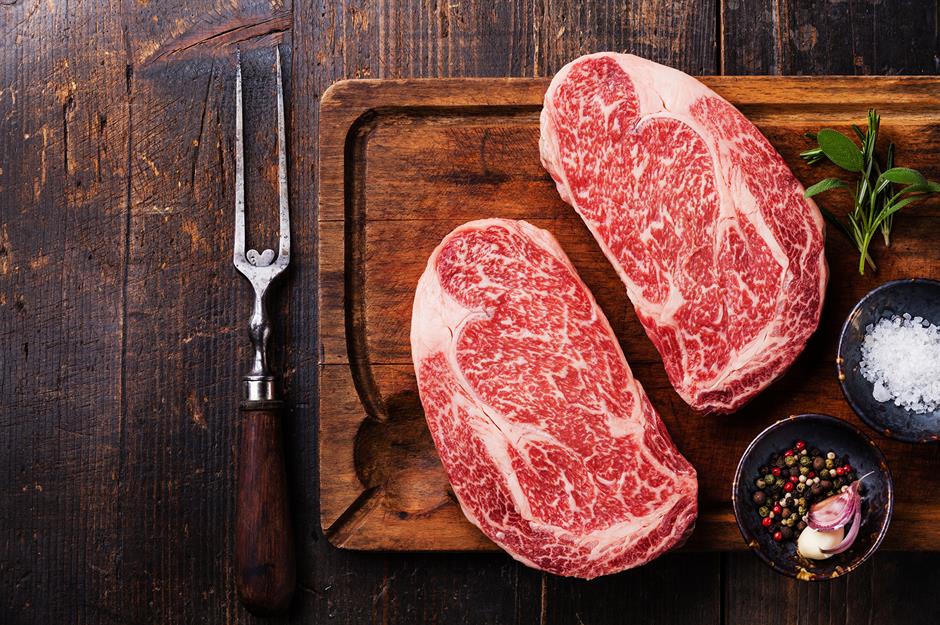
Marbling (streaks of fat running through meat) depends on a number of factors, including the cow breed, age and diet, the cut and how long the meat has been aged. Breeds known for intricate marbling include Angus and wagyu, while well-marbled cuts include flat iron and rib-eye. Marbling infuses flavour into meat, as the fat melts during the cooking process. If you want to keep your meal lean, go for a fillet.
15. Forgetting to render the fat
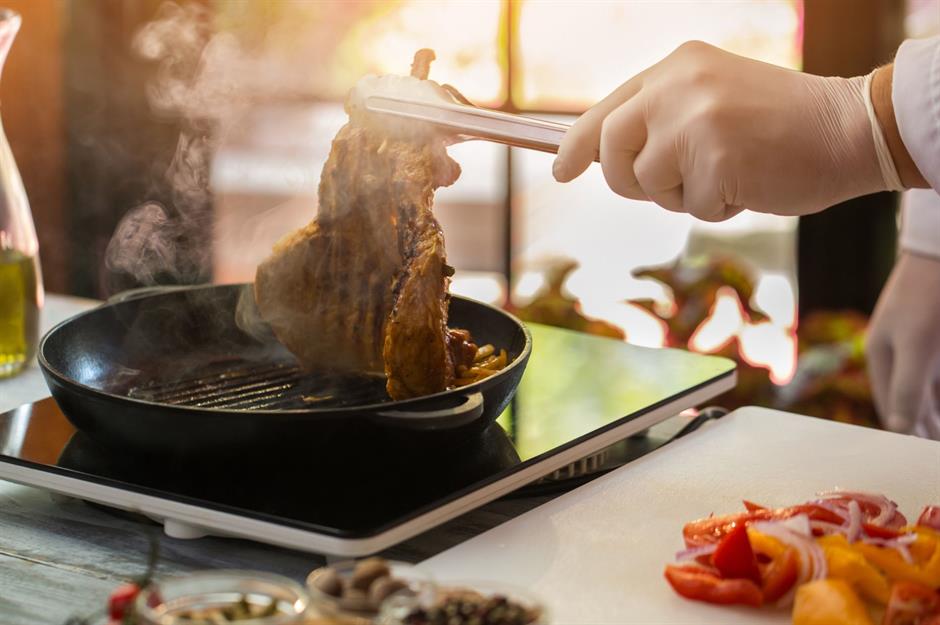
Many chefs will advise you to cook steak fat-side down first, especially when it comes to sirloin, which has a strip of fat running down its side. This renders the fat, essentially meaning it melts in the pan. It can help to cook the meat and create a caramelised crust around it.
14. Choosing the wrong cut for your dish

Choose the right cut, depending on what you want from your steak, how you intend to eat it and what you can afford. Rump steak (sirloin in the US) is fatty and full of flavour. It can be fried, grilled or sliced for stir-fries. Tenderloin fillet, or filet mignon, is pricey but tender and lean. It’s ideal for raw meat dishes such as carpaccio and tartare. Rib-eye, meanwhile, is perfect for grilling or barbecuing, and it should be served with minimal embellishment – a classic sauce will let the meat shine.
13. Discarding the meat’s juices
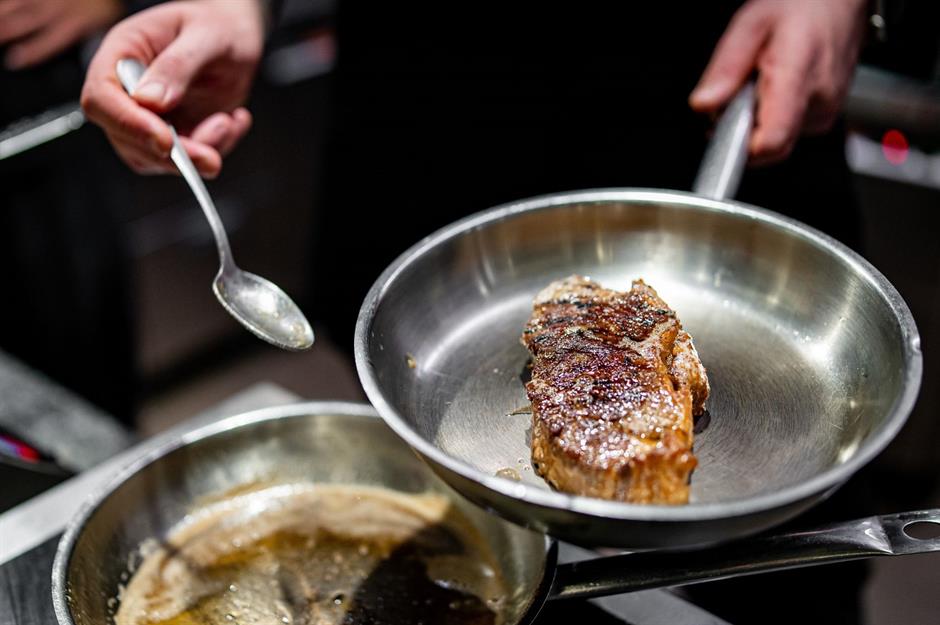
If you really want to amp up the flavour of your finished steak dish, the secret lies in utilising the meat’s juices. Once you’ve cooked the steak, don’t discard the juices left in the pan – this is where all the flavour is. You can use this fatty liquid as the base for a delicious sauce by incorporating corn flour, a cube of butter and a dash of stock or water.
12. Adding butter too early
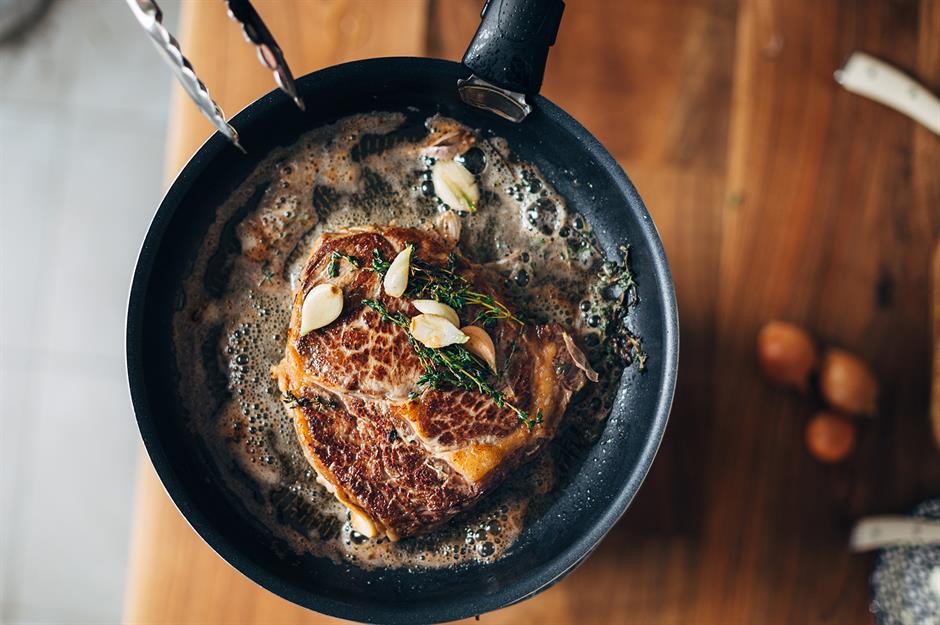
Opinions differ as to whether you should cook steak in butter or not, but we think it's an excellent way of adding richness and flavour. Add your steaks to a smoking hot pan to sear and render any fat, then add a few knobs of butter, some woody herbs (like rosemary), and a few garlic cloves with the skin on. Using a spoon, baste the steak with the garlic and herb–infused butter to cook and caramelise it, as well as to add more flavour.
11. Flipping it too often
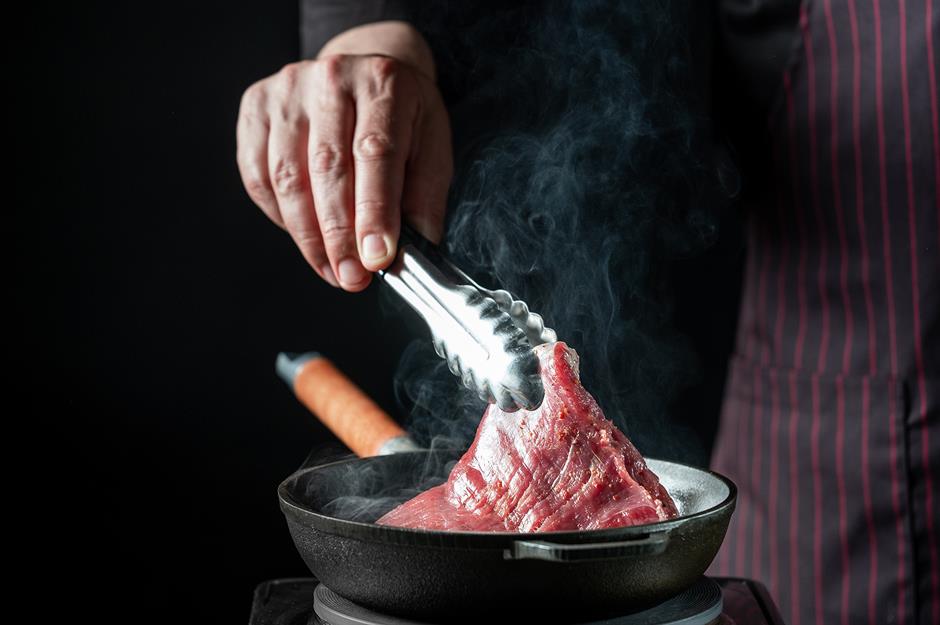
Whether on the barbecue or in a pan, steak is best left alone. Don't poke, prod or move it while it's cooking until it's ready to be flipped. You'll know when to flip it either by how long it's been cooking or when it releases from the pan. If you move it and flip it often, you won't get the lovely crust on the outside.
10. Not getting the pan smoking hot
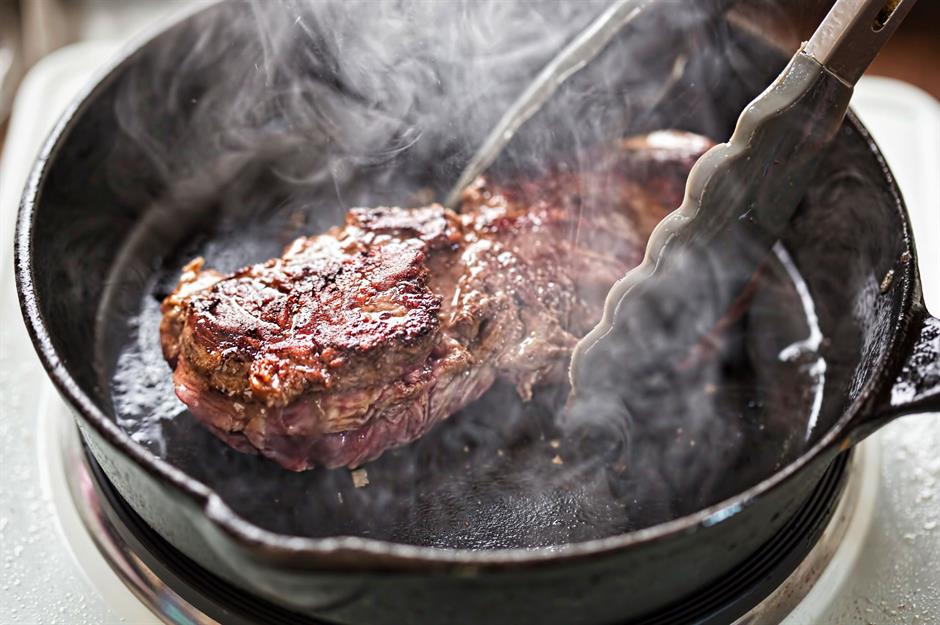
The pan should be so hot that it starts to smoke a little before the meat is added. The heat sears the meat and helps render the fat. For safety, turn on the extractor fan and be prepared in case the pan flares up (if it does, just put a lid over the top, and it will die down).
9. Getting the temperature wrong

There’s nothing worse than an overcooked (or underdone, if you like yours well cooked) steak. If you prefer absolute precision, use a meat thermometer to test if the steak's cooked the way you want it to be. Most guides suggest around 55°C (131°F) for rare steaks, 60°C (140°F) for medium-rare steaks, around 65°C (149°F) for medium steaks and 75°C (167°F) for well-done steaks.
8. Overcrowding the pan
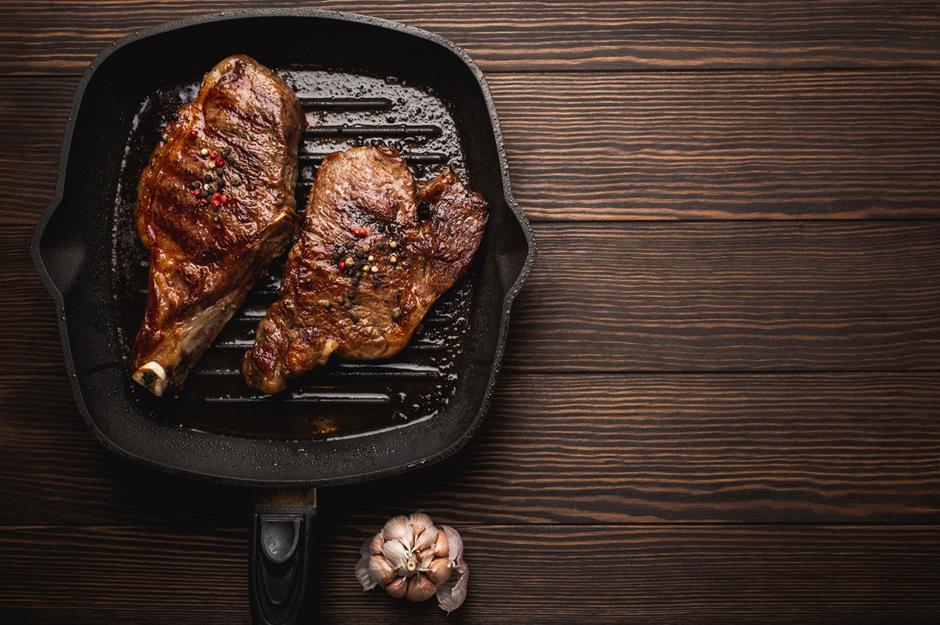
If you’re cooking more than one steak, don’t add too many to the pan at once. The meat will steam rather than fry, boiling itself into a tough and tasteless state. The general rule of thumb is that you should only ever fill 50% of the pan if you want to sear anything.
7. Not knowing when your steak is done
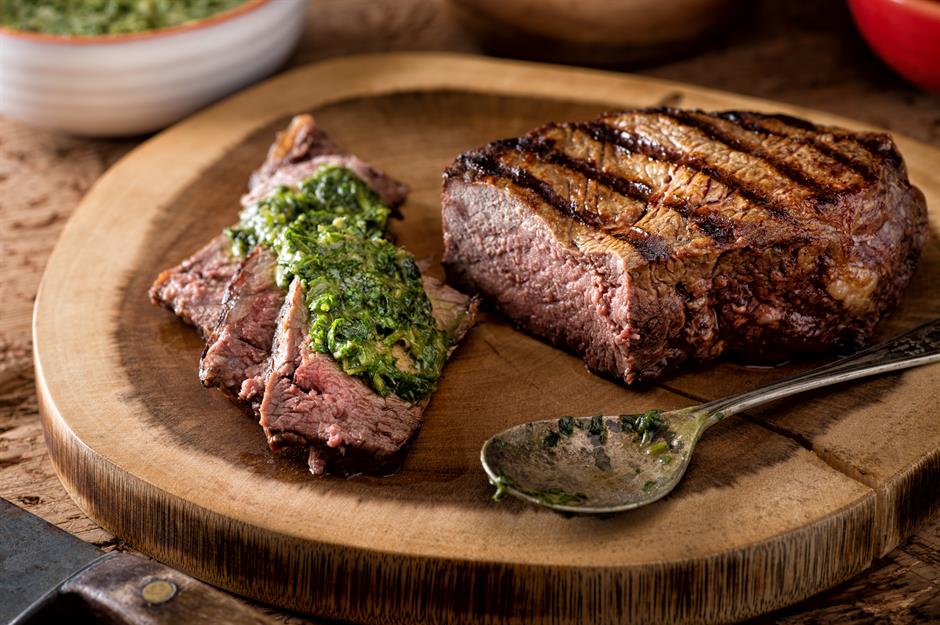
To tell when a steak is cooked, try the 'OK' test. Put the tips of your thumb and forefinger together in an OK sign, then, with your other hand, press down on the fleshy part of the palm, just below the thumb. That’s how a rare steak should feel. Put your middle finger and thumb together and do the same test to know how a medium-rare steak should feel when pressed. Repeat with your ring finger and thumb for a medium steak texture, and your little finger and thumb to gauge a well-done steak.
6. Seasoning too early
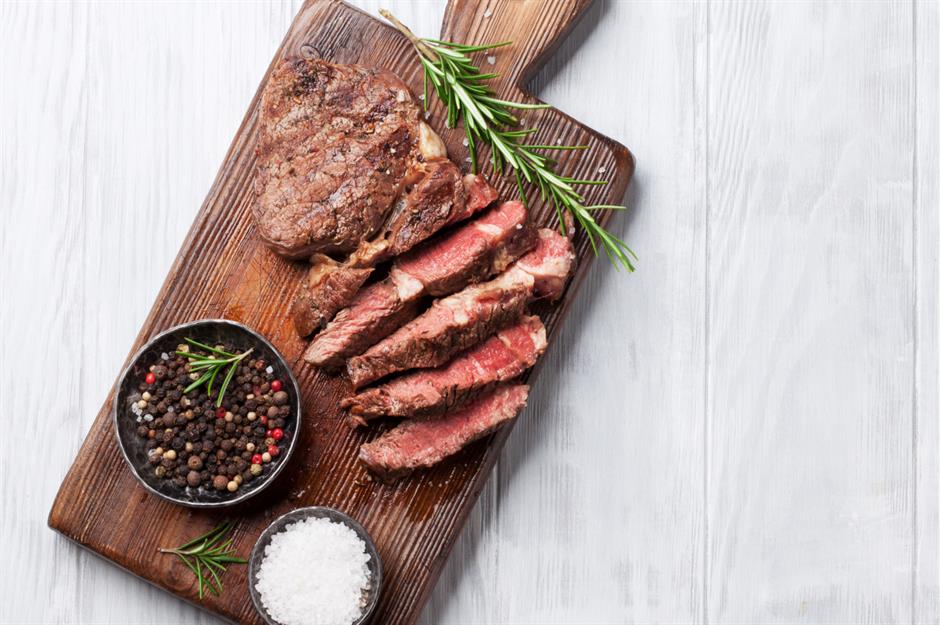
Generously salt the meat with salt flakes just before cooking. If you do it too early, the salt will start drawing out the moisture from the steak. When you think you've seasoned your steak enough, get it straight in the pan – the coarse salt crystals will help create caramelisation on the surface. Season with finely ground black pepper before cooking, but reserve coarsely ground peppercorns for after, otherwise they'll burn. Finish with a light sprinkle of salt flakes just before serving to intensify the flavours.
5. Not resting your steak
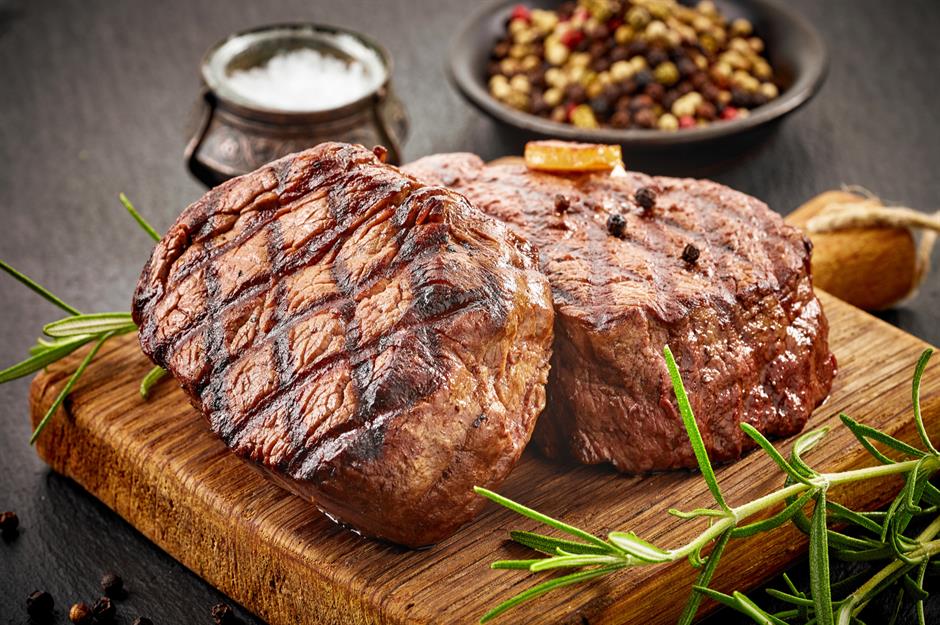
Steak needs a minimum of five minutes to rest (the larger the steak, the more time it needs). This allows the juices to soak back into the tissue as the fibres relax, which results in moist, tender meat. Cover with foil to retain the heat, but make sure it's loose – otherwise, the heat won't have anywhere to escape, and your steak will overcook.
4. Cooking your steak from cold

A cardinal rule when cooking steak is to always remove the meat from the fridge and allow it to come up to room temperature before cooking. This way, the muscle fibres won't seize and toughen when added to a hot pan. The steak will cook more evenly, and you'll be able to achieve the desired temperature (the level of doneness) much more easily.
3. Getting your timings wrong
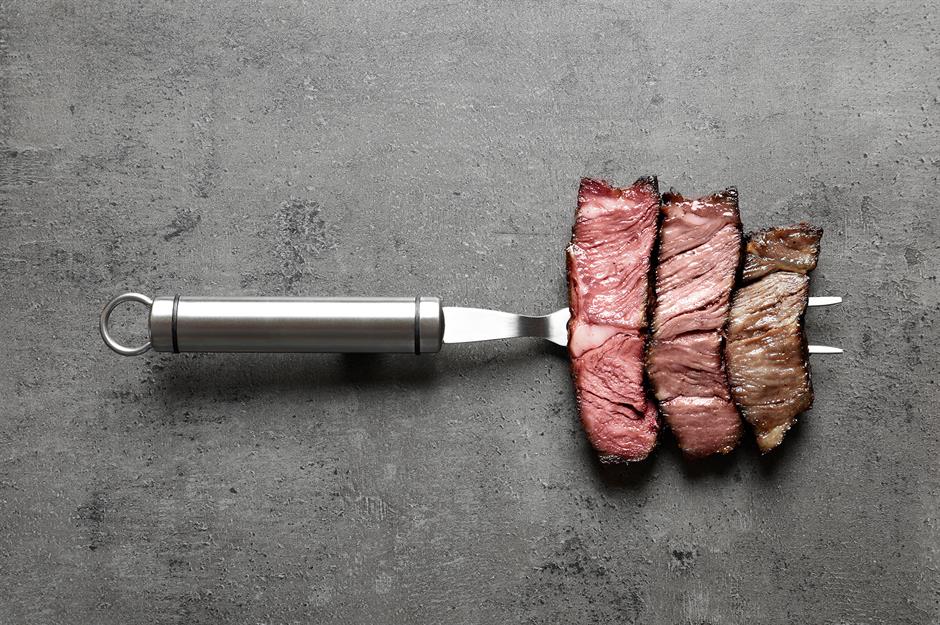
You'll often hear chefs referring to the temperature of steak. This means they're talking about the level of doneness. The most commonly used terms are blue (purple, barely warm steak that will feel very spongy) and rare (dark red steak that still has red juices flowing). Medium rare is when the steak is pink and juicy in the middle, yet cooked throughout. Medium steak will be pale pink in the middle, while well-done steak will only have a trace of the pink colour.
2. Trying to cook a wet steak

The best steaks have that all-important seared crust, but this is almost impossible to achieve if your steak is too moist. The Maillard reaction is a chemical process that releases new flavour compounds when meat is seared – when you dry the surface of the steak, you remove moisture, allowing for better browning and caramelisation during cooking (and thus enhancing the flavour). Before cooking, dab your meat dry using kitchen paper. It’s a simple step, but it makes a big difference.
1. Cooking all cuts the same way
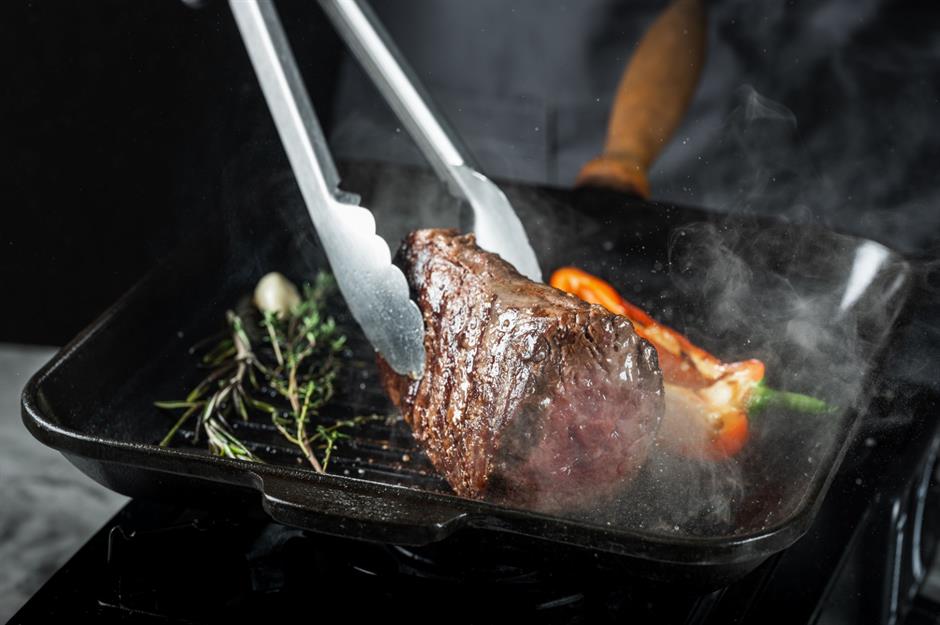
Pan frying is the most common way to cook steak, followed by grilling and barbecuing (for those partial to a smoky aroma and charred lines). But there’s room for experimentation; certain cuts can be thinly sliced, flash-fried and eaten in salads, sandwiches and stir-fries, for example. Fillet, meanwhile, can be eaten raw as carpaccio and steak tartare. Cheaper, tougher cuts, such as chuck and brisket, need to be braised or slow cooked to break down the connective tissue and tenderise the meat.
Now discover everything you need to know about cooking chicken
Last updated by Lottie Woodrow.
Comments
Be the first to comment
Do you want to comment on this article? You need to be signed in for this feature
Most Popular
Reviews 31 unbelievably sugary cereals from around the world